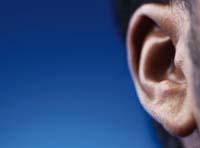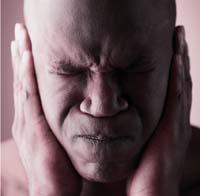Ear buzz

Timnitus or akufeno is a hearing perception problem that involves hearing noises in the ears and/or head without external sound. They are perceived or heard in different ways: as buzz, as txistu, as cry, etc. It can be a continuous or pulsating sound, continuous or sporadically. It is quite common and many people perceive it quickly. However, continuous or recurring timnitus can be extremely stressful and affect the daily life of the individual. In fact, it affects your ability to concentrate or sleep and can get injured.
It is not yet very clear why a person listens to noises without external sound. However, acufenes are associated with acorn plugs, middle ear infections, hearing loss, or benign tumors. In most cases, they occur in the ear and ear canal.
Although there are no clear causes, treatment is for acuphene. Dr. Heitzmann of the University Clinic of Navarra, for example, recommends the treatment of acufeni by TRT (Tinnitus Retraining Therapy). The goal of this treatment is to get used to noise, which the brain must process in some way. For this, the patient receives the support of therapeutic advice and acoustic therapy. The father of this therapy, Pawel J. Jastreboff is an American professor based on a neurophysiological model proposed by him.
This neurophysiological model has been applied at the Clínica Universitaria de Navarra and, according to Heitzmann, "most patients have managed to get used to acufenos. It is one of the treatments that currently offers one of the best results."
Habits account

It is not a matter of eliminating the acufene, but of getting used to it, until the acufene reaches no harm. In some cases it is impossible to avoid the noise produced by the ear. According to Heitzmann, the most important thing is to get used to the noise, in some way, not being possessed of this stimulus. This is achieved by undermining the problem. Something similar happens with the clothes you wear every day: we usually do not realize that we wear it, and if we realize it does not bother us. Therefore, get used to forgetting the existence of acufene.
When acufene hurts, the central nervous system processes it as an important sound. When this is so, each can prove that he does not consider it so, or stop processing it with that meaning and leave it at the level of subconscious. To achieve this goal is supported by therapeutic advice and sound therapy.
With the therapeutic advice, the doctor performs some psychological therapy to the patient. In short, the aim of the therapeutic council is not to give so much importance to acufene to eliminate its negative meaning for the patient.

Through sound therapy they have seen that the silence in the duct increases the sensitivity of the ear. Therefore, if in that ear canal there is a sound, such as acufene, it is perceived immediately and only annoys. To avoid this phenomenon they insert a sound in the ear canal that reduces the perception of acufeno at cortical level. In some way, with this sound that is inserted they intend to reduce and eliminate the influence of the aquiphene.
Therapy adapts to the conditions and needs of each person. Some need generators that emit sound. These generators are placed in the ears for eight hours a day. However, this sound can never completely cover the acuphene. That is, it must be both at the level of acuphene and lower.
The time of accustoming to acufene and the disappearance of this certain pain depends on factors such as the development time of the acufene, the psychological profile of the patient and other pathologies. However, considering all of them, it can be said that this is an account of about a year or two years.





